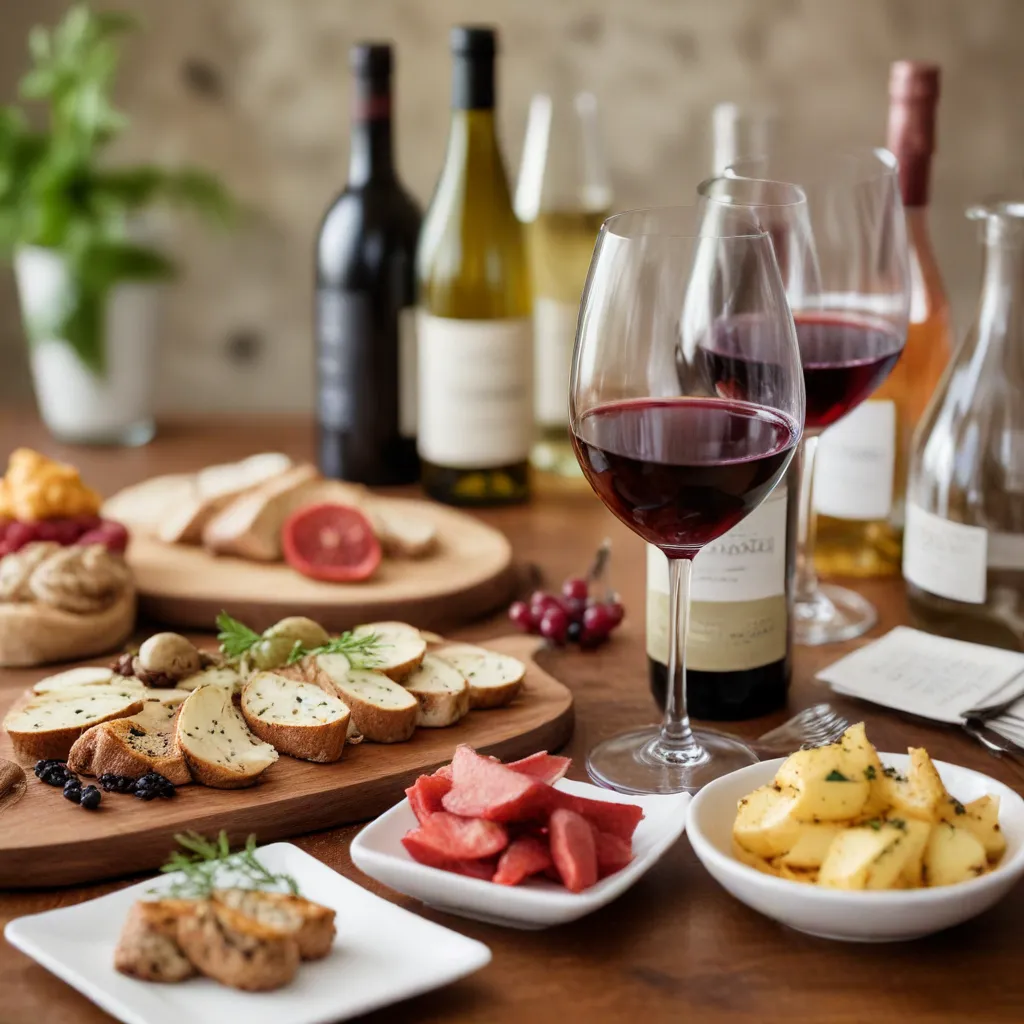
The art of food-wine pairing is a tantalizing symphony of complementary flavors, textures, and aromas. As a hospitality and wine expert, I’m thrilled to guide you through the enchanting journey of unlocking the hidden harmonies that elevate the culinary experience.
Understanding Flavor Profiles
At the heart of successful food-wine pairings lies a deep understanding of the flavor profiles at play. Each varietal of wine and each type of cuisine possesses a unique mosaic of tasting notes, from the bright citrus of a Sauvignon Blanc to the velvety dark berries of a Cabernet Sauvignon. By carefully analyzing these flavor profiles, we can begin to identify the natural affinities and intriguing contrasts that create captivating pairings.
Complementary and Contrasting Pairings
The fundamental principles of pairing food and wine revolve around the concepts of complementary and contrasting flavors. Complementary pairings occur when the flavors of the wine and the dish seamlessly harmonize, amplifying each other’s nuances. For example, the lush, creamy notes of an oak-aged Chardonnay can beautifully complement a rich, buttery seafood dish.
On the other hand, contrasting pairings leverage the interplay of opposites, creating a dynamic tension that tantalizes the palate. The bright, zesty acidity of a Pinot Grigio can provide a refreshing counterpoint to the robust flavors of a spicy Thai curry.
The Role of Acidity and Tannins
Two crucial elements in wine that influence food pairings are acidity and tannins. Acidity acts as a natural palate cleanser, cutting through rich or fatty foods and preparing the way for the next bite. Tannins, on the other hand, can lend structure and drying sensations that balance out dishes with pronounced umami or sweetness.
Understanding how these wine components interact with different culinary profiles is paramount to crafting harmonious pairings. A full-bodied, tannic Malbec, for instance, can beautifully complement the char and spice of a grilled steak, while a high-acid Riesling can enliven the delicate flavors of a fresh seafood salad.
Balancing Flavors
Achieving balance is the cornerstone of successful food-wine pairings. The goal is to ensure that neither the wine nor the dish overpowers the other, but rather they elevate each other’s attributes. This can be accomplished by considering factors such as the intensity of flavors, the richness of textures, and the overall weight of the components.
A delicate fish dish, for example, may be overwhelmed by a bold, heavily oaked Chardonnay, but find harmony with a lighter, unoaked style. Conversely, a hearty beef stew or a flavorful pasta Bolognese would be better suited to a robust, full-bodied red wine.
Considering Texture and Mouthfeel
Beyond mere flavor profiles, the interplay of textures and mouthfeel between food and wine is equally crucial. A creamy, velvety Pinot Noir can provide a sumptuous counterpoint to the delicate flakiness of pan-seared salmon, while a crisp, high-acid Sauvignon Blanc can cut through the richness of a decadent cheese plate.
Accommodating Dietary Preferences
In today’s diverse culinary landscape, it’s essential to consider the dietary needs and preferences of your guests when crafting food-wine pairings. Whether catering to vegetarians, vegans, or those with specific allergies, the skilled sommelier must be adaptable in finding harmonious combinations that cater to all palates.
Exploring Regional Pairings
The concept of “what grows together, goes together” holds true in the world of food-wine pairing. Exploring regional cuisines and their corresponding local wines can unlock a treasure trove of delightful synergies. The bold, herbal Sangiovese of Tuscany, for instance, is tailor-made for the rich, tomato-based dishes of Italian cuisine. Similarly, the bright, citrusy Albariño of Spain’s Galicia region is a natural companion to the region’s seafood delicacies.
The Art of Experimentation
While there are certainly time-honored classic pairings, the true beauty of food-wine harmony lies in the spirit of experimentation. Embracing a spirit of adventure and an openness to unexpected combinations can lead to revelatory discoveries. A crisp, dry Riesling, for example, might unexpectedly harmonize with the umami-rich flavors of a Japanese stir-fry, or a bold, spicy Zinfandel could find surprising synergy with the sweetness of a barbecued pork dish.
Pairing with Desserts and Cheeses
The world of food-wine pairing extends beyond the main course, encompassing the sweet and savory delights of desserts and cheese plates. A luscious, late-harvest Riesling can elevate the flavors of a fruit tart, while a robust, fortified Port can provide a captivating counterpoint to a rich, creamy cheesecake. Likewise, a tangy, semi-soft cheese can find harmony with the bright, fruity notes of a crisp Sauvignon Blanc.
Evolving Trends in Food-Wine Harmony
As the culinary and oenological landscapes continue to evolve, so too do the principles of food-wine pairing. Innovative chefs and winemakers are constantly pushing the boundaries, experimenting with non-traditional ingredients and unexpected flavor combinations. From the rise of natural wines to the growing popularity of plant-based cuisine, the world of food-wine harmony is a dynamic and ever-changing canvas, inviting us to explore, discover, and delight in new and exciting ways.
Whether you’re a seasoned oenophile or a budding foodie, embracing the art of food-wine pairing can elevate your dining experiences to new heights. By understanding the nuances of flavor profiles, leveraging the interplay of complementary and contrasting elements, and remaining open to the thrill of experimentation, you’ll unlock a world of culinary harmony that will linger long after the last sip and the final bite. Embark on this flavorful journey with us at Wine Garden Inn, where the pairing of gourmet cuisine and our estate-grown wines promises to create memories that will nourish both body and soul.
